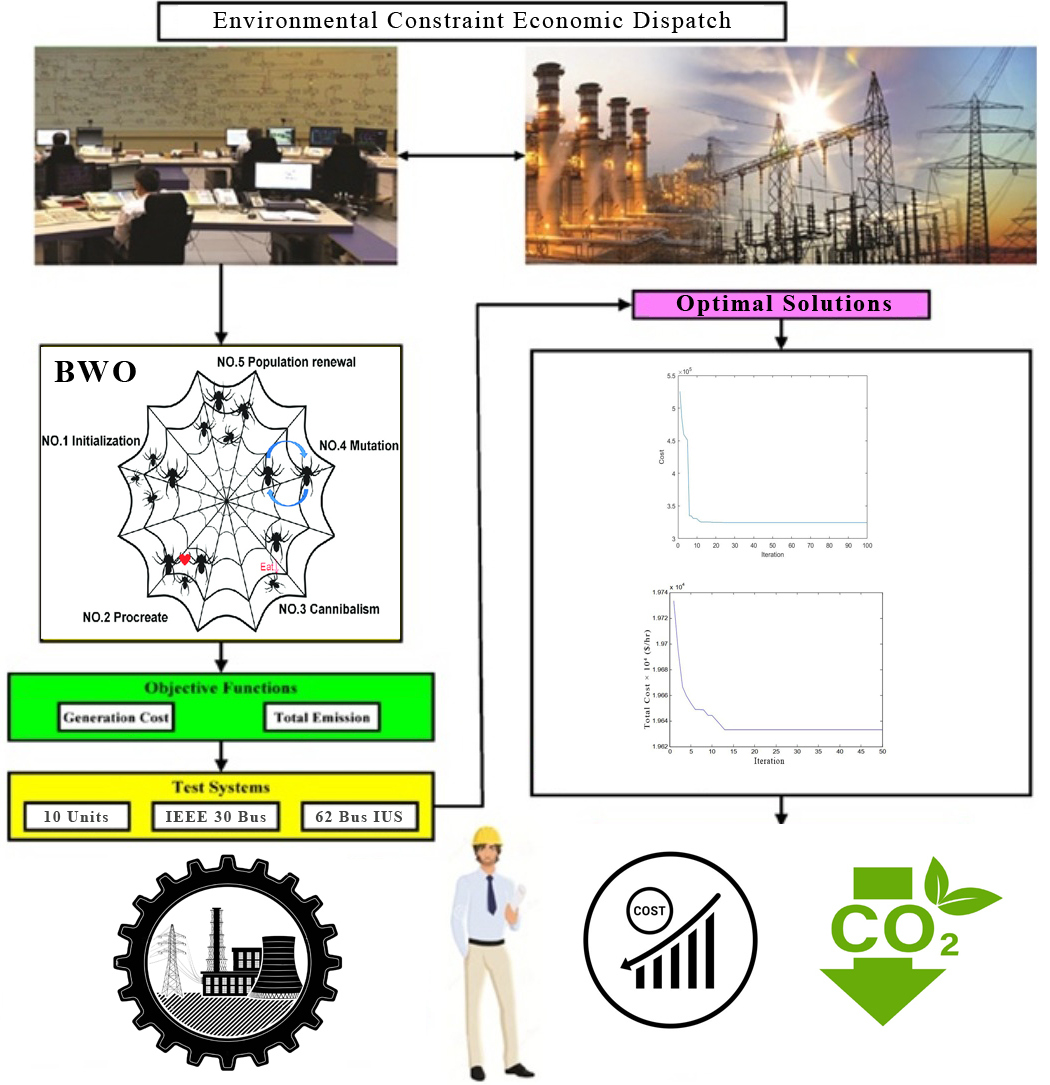
Conventional electrical power systems often prioritize economic gain over environmental protection, which can lead to negative environmental consequences, such as emissions from thermal power plants. In recent years, there has been significant research and investment aimed at addressing the challenges posed by both environmental restrictions and economic dispatch. This study introduces the Black Widow Optimization (BWO) technique to optimize the integration of Renewable Energy Sources (RES) in the context of effective economic dispatch. The BWO algorithm is inspired by the unique mating behaviors of black widow spiders, where cannibalism plays a crucial role in the process. To achieve faster convergence, the BWO removes species with poor fitness from the population. Compared to other optimization algorithms, BWO offers several advantages, including early convergence and the ability to achieve higher fitness values. To assess the performance of the proposed approach, we applied it to various test cases, including a 10-unit generator system, the IEEE 30-bus system, and the real-time 62-bus Indian Utility System (IUS), which incorporates RES output. The results show that, in comparison to other contemporary algorithms, the BWO method significantly reduces fuel costs, as demonstrated by both the Probability Distribution Function (PDF) and the Cumulative Distribution Function (CDF).
Total file downloads: 26